【Tateyama Kurobe Alpine Route】Exploring Japan’s Toyama Prefecture
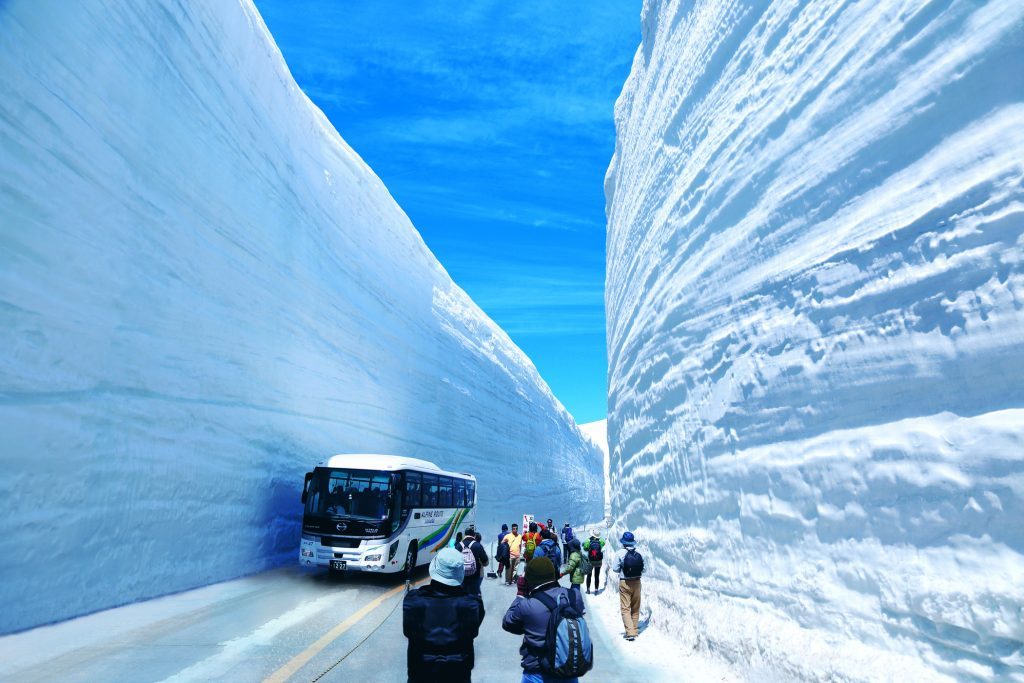
You must excuse me for starting with such an overwhelming picture of snow. Greetings, editor-in-chief Sakura here.
Let me begin by asking what comes to mind when you think of the Toyama Prefecture. For residents of Toyama, I’m sure there are many things, but for those from outside the prefecture, most likely Toyama = Tateyama-Kurobe Alpine Route.
The Tateyama Kurobe Alpine Route is considered the number one sightseeing attraction in Toyama, bringing visitors not just from outside the prefecture, but from all over the world.
As a Toyama resident, I’m here to share my experience as I go to check it out for myself as well as give my own advice to make sure you get the best out of your trip.
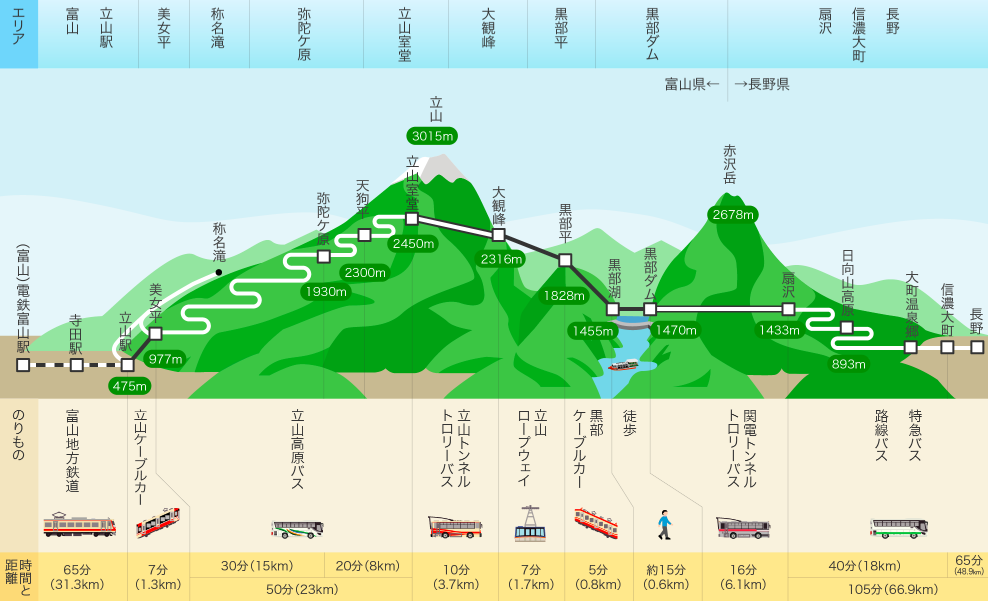
画像引用 「Tateyama Kurobe Alpine Route」より
The Tateyama Kurobe Alpine Route contains a series of peaks with elevations of over 3,000 meters running through the northern alps. This has made it one of the leading mountain sightseeing routes in the world.
Starting on the Toyama Prefecture side of the mountains, the route extends for 37.2km from Tateyama-machi’s Tateyama Station and runs through to Oomachi’s Ogizawa Station in the Nagano Prefecture. Along this route, there is an abundance of picturesque scenery of the mountains and surrounding nature.
In particular, the giant snow corridors and Kurobe Dam are famous locations along this route.

画像引用 「立山黒部アルペンルート」より
The Tateyama Kurobe Alpine Route is located between the Toyama and Nagano Prefectures and is accessible from both sides.
However, it can be difficult to choose between: “Travel from Tokyo to Nagano and cut across to Toyama and then return to Tokyo” and “Travel from Tokyo to Nagano, view the snow walls, and once again return to Tokyo from Nagano.”
Train from Tokyo
Tokyo to Tateyama Station (Toyama) – 13,730円
Tokyo to Ogizawa Station (Nagano) – 10,600円
Train from Osaka
Osaka to Tateyama Station (Toyama) – 9,850円
Osaka to Ogizawa Station (Nagano) – 12,440円
Train from Nagoya
Nagoya to Tateyama Station (Toyama) – 6,030円(Bus)
Nagoya to Ogizawa Station (Nagano) – 7,490円
To travel from Tokyo to Nagano, cut across to Toyama and then return to Tokyo, it will cost 32,620円
To travel from Tokyo to Nagano, view the snow walls, and once again return to Tokyo from Nagano, it will cost 30,250円
With only a difference of a few thousand yen, I think it’s a good deal to cut across, but if your goal is to see solely the alpine route, then it might be a good idea to go ahead and return on a round-trip ticket.
It can get overwhelming to consider all of the options, so for those wanting to take a simple route, it might be more enjoyable to purchasing a tour set that combines travel and hotel expenses.
Every year, the route opens from mid April and closes in mid November.
Once the exact dates for the 2019 season are released, we will update this information.
Of course the length of one’s trip to the Tateyama Kurobe Alpine Route will differ person-to-person, but including travel times, it will likely take an entire day.
In my case, I left the Tateyama Station at 9am and after a round trip, returned late in the afternoon.
Even with a one-way trip from Nagano to Toyama, remember to take time for lunch and sightseeing into consideration.
For example, travelling from Toyama Station to Shinano-Oomachi in Nagano alone will take 5 hours.
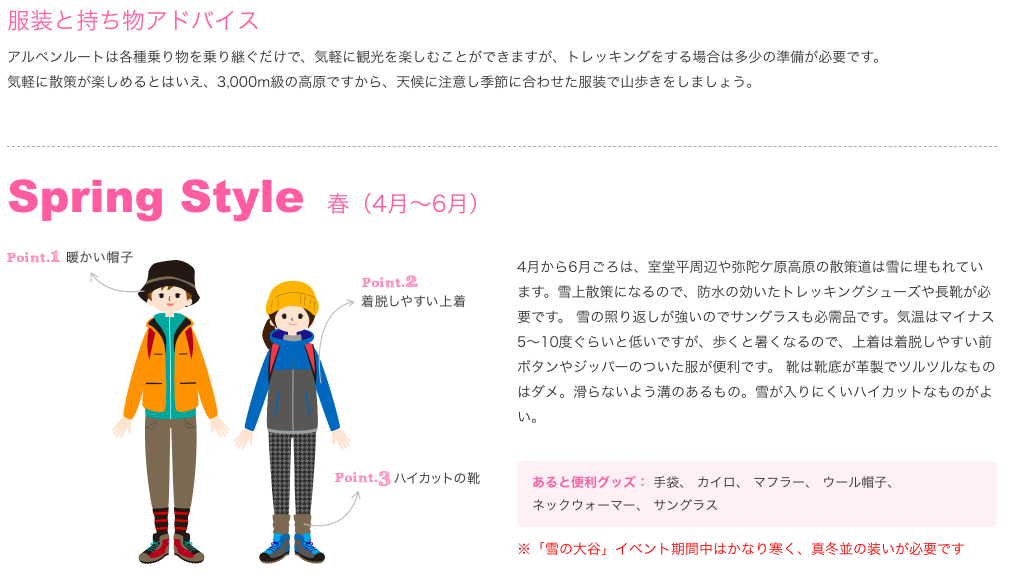
画像引用 「立山黒部アルペンルート」より
On the topic of belongings, there are a variety of things sold at each rest area, so don’t fret if you have forgotten something.
However, as locally sourced items tend to cost a bit more, I would recommend making sure to bring with you a personal pair of sunglasses and sunscreen.
Especially since these are snowy mountains we’re talking about, make sure you have proper cold weather attire.
Seasonal clothing advice can be found on the Tateyama Kurobe Alpine Route homepage, making it a great resource to consult.
【Belongings and Clothing】
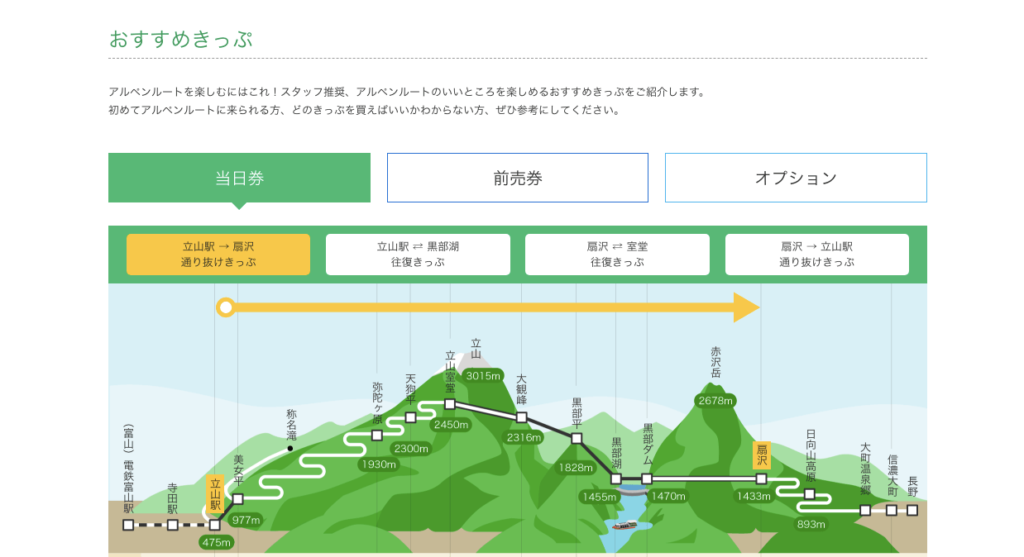
画像引用 「立山黒部アルペンルート」より
On the Tateyama Kurobe Alpine Route homepage, tickets are available for purchase on the web as well as weekday discounts, Alpine tickets, and info and discounts on tours.
For example, the weekday discount ticket allows you go travel from Tateyama Station to Ogizawa Station for the reduced price of 8,290円→7,480円.
If you have decided to make the spectacular trip to the Tateyama Kurobe Alpine Route, I would recommend promptly buying tickets on the web ahead of time.
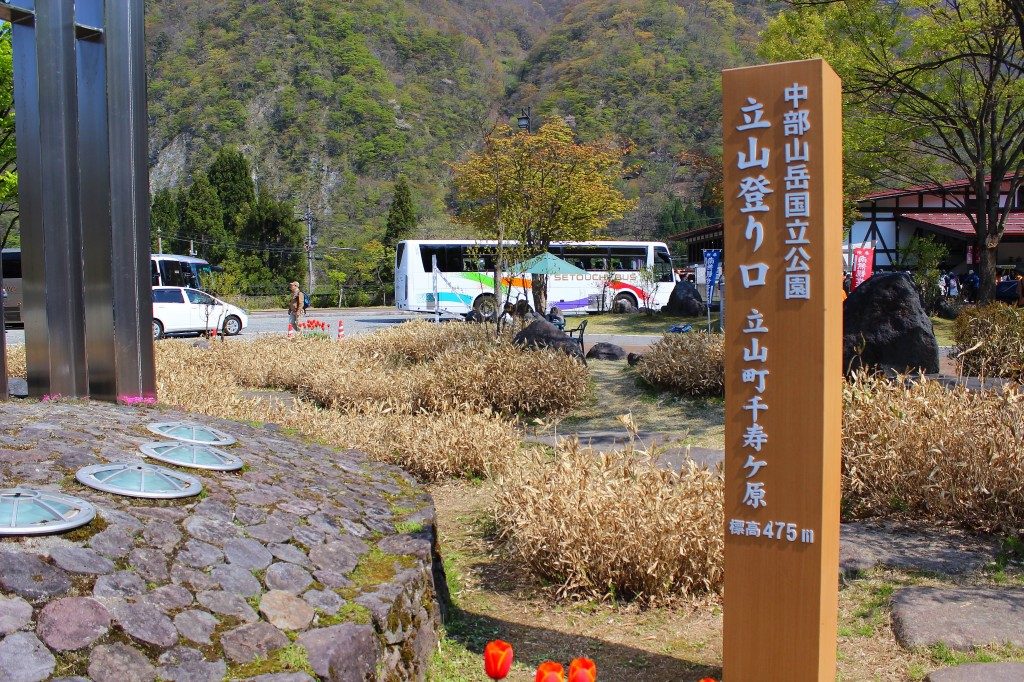
From here on, I’d like to share my experiences as I went to see just what the Tateyama Kurobe Alpine Route is really like.
This time, I began my adventure from Tateyama Station in the Toyama Prefecture.
Tateyama Station is somewhat far from the central Toyama city, making it a considerable trip even as a Toyama resident.
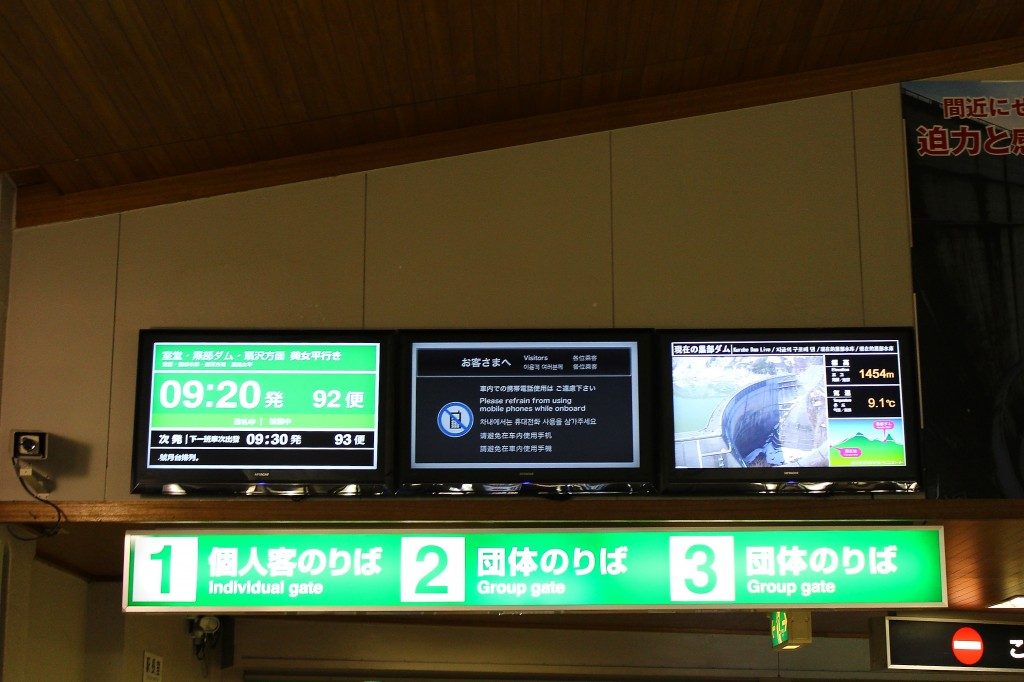
It’s possible to buy tickets directly at the station, but if it is crowded, the wait time can be long.
I waited for 20 minutes to buy my tickets, but the wait could have been longer had there been more people.
By the way, it’s possible to kill time as you wait at the 「Tateyama Caldera Erosion Control Museum」.
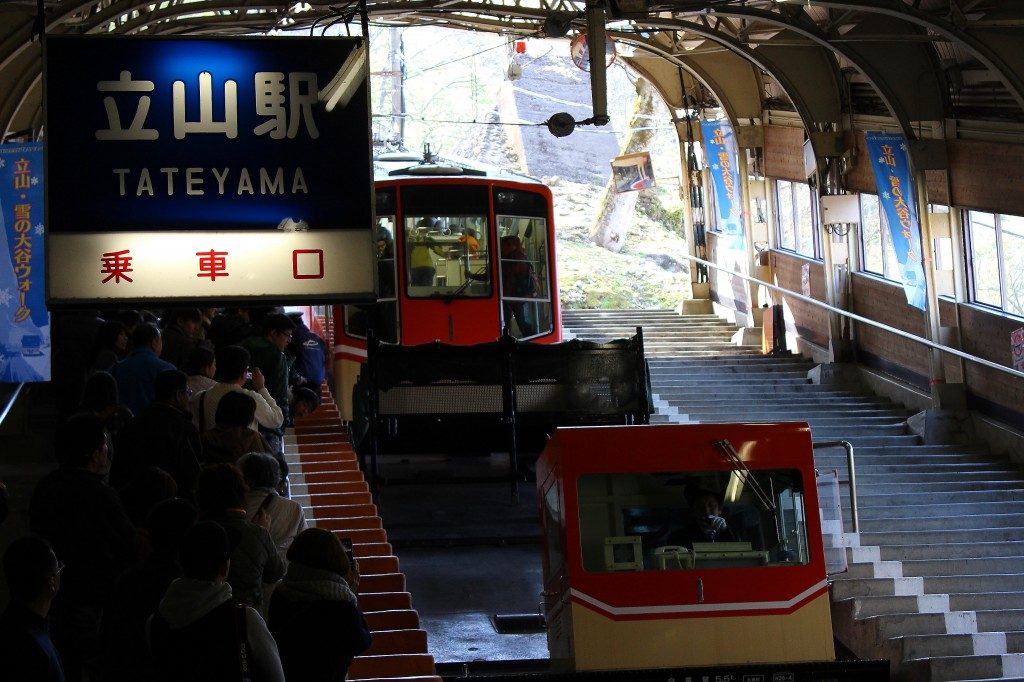
First, I rode the Tateyama Cable Car from Tateyama Station and headed to the first stop: Bijodaira Station.
Everyone was understandably busy taking photos of the cable cars as it is not an everyday sight.
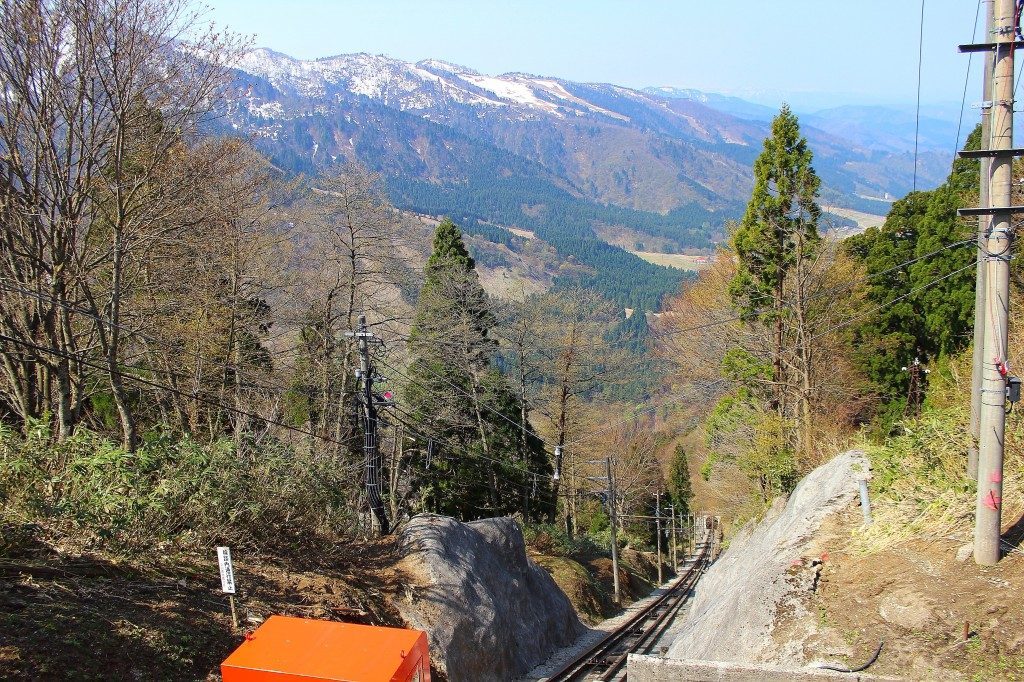
The car quickly filled up and was like a crowded subway train, but the view from the window was very beautiful!
The tracks had a slope similar to that of a roller coaster.
If the breaks were to release right now, we’d probably go flying all the way to Russia.
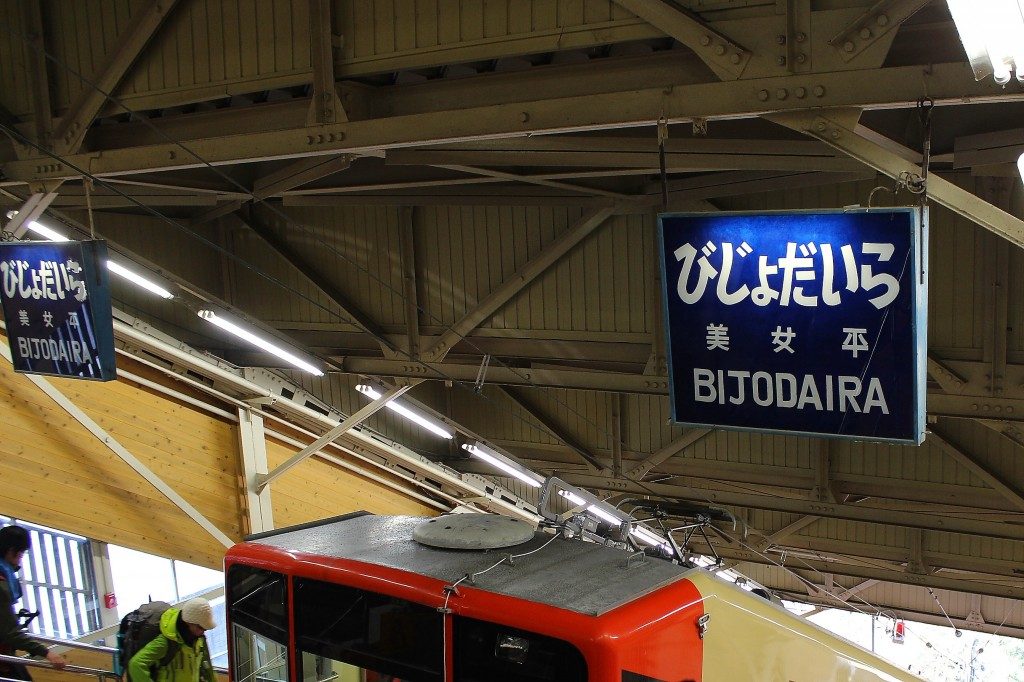
Finally, we had arrived at Bijodaira Station.
Apparently, there was once a woman who tried to climb Tateyama, which, at the time was prohibited to women, and having angered God, was turned into a cedar tree.
Therefore, this area which has many beautiful cedars is called “Bijodaira”, or “beautiful plank”. How terrifying.
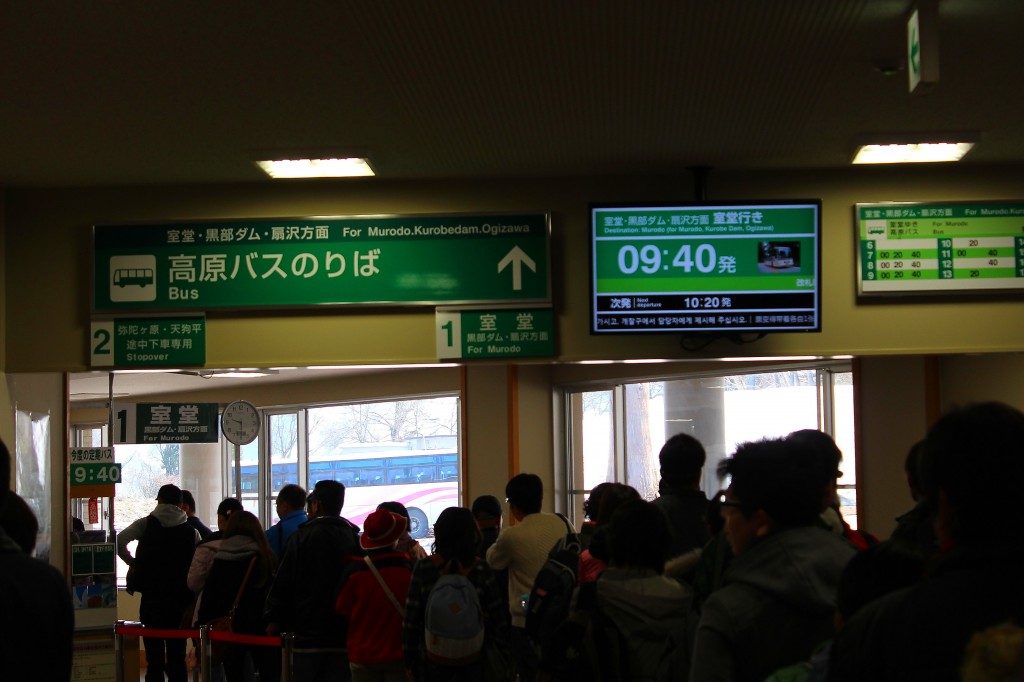
There is not a whole lot to do at Bijodaira Station so we all moved onto the Kougen Bus Terminal.
There is a toilet and souvenir shop at this station so you can rest if you must, but it’s a non-stop so we passed right through.
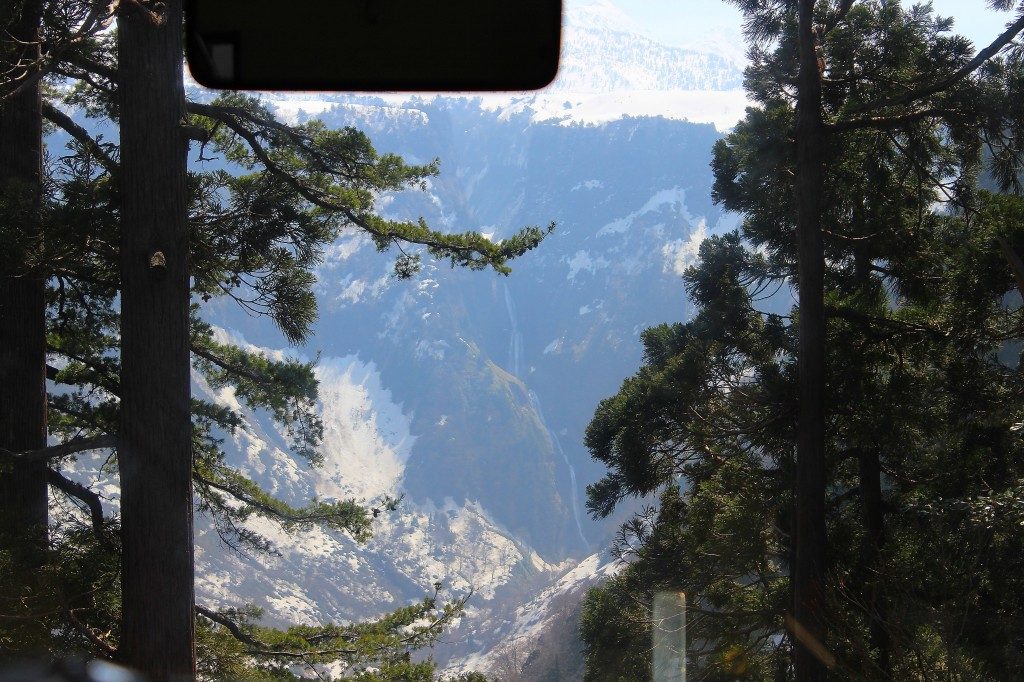
From here, you will have a shaky 30 minute bus ride.
Along the way, there is a beautiful view of the tallest waterfall in Japan, Shōmyō Falls.
The waterfall is over 350 meters, but as it is a passing view from a bus, it looked like just a little line.
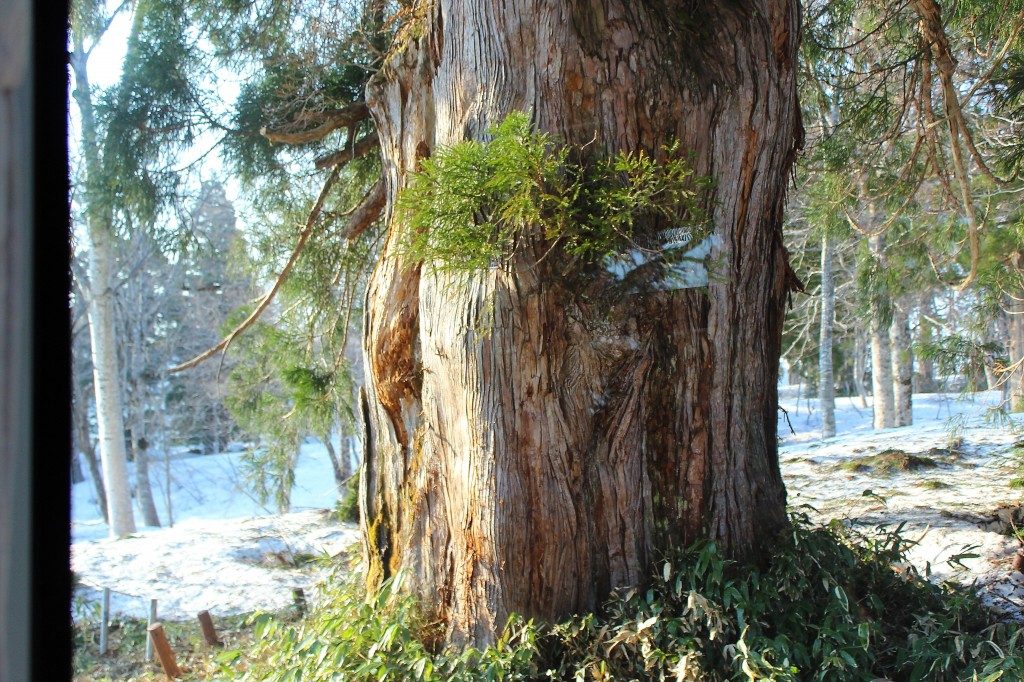
Also on this bus ride, you will be able to see what is considered to be the largest cedar tree in the area.
This time, we were able to see it much closer up, and this tree appeared to be many hundreds of years old.
So, while it is quite a long bus ride, there are many sights along the way and the trip can be made more enjoyable with a guide.
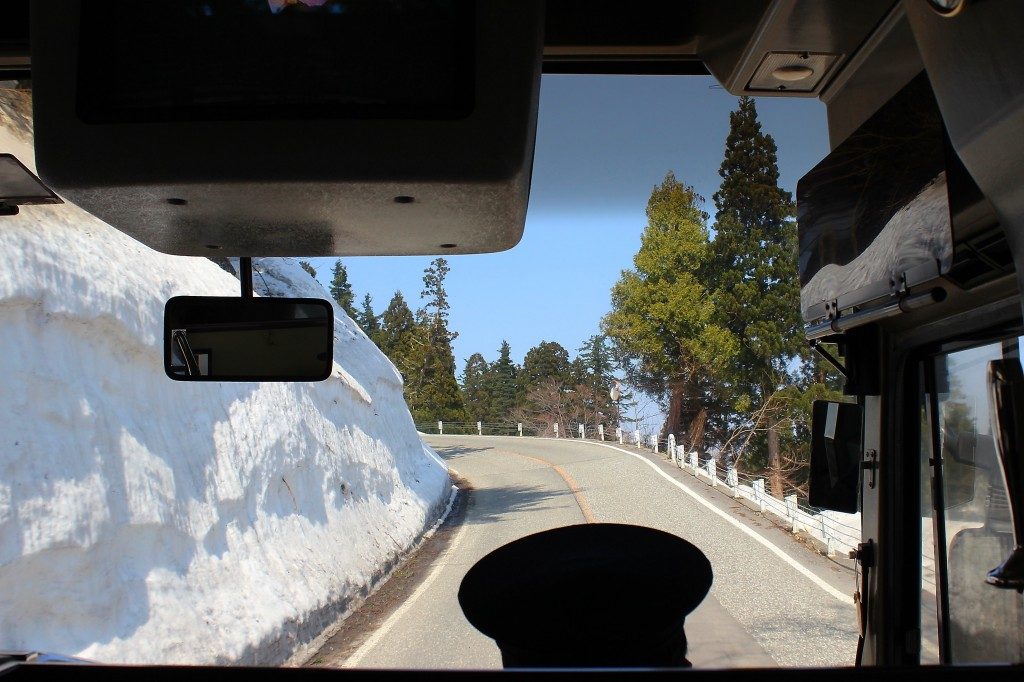
Slowly, the view from the bus began turning into more recognizable walls of snow.
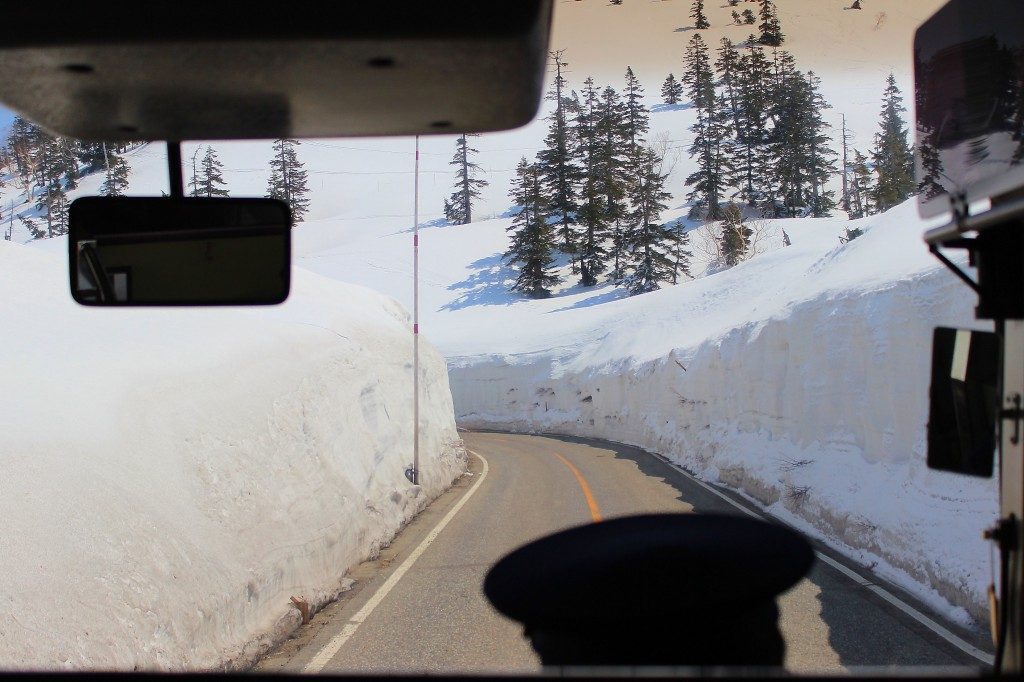
And then these walls began to gradually get taller and taller.
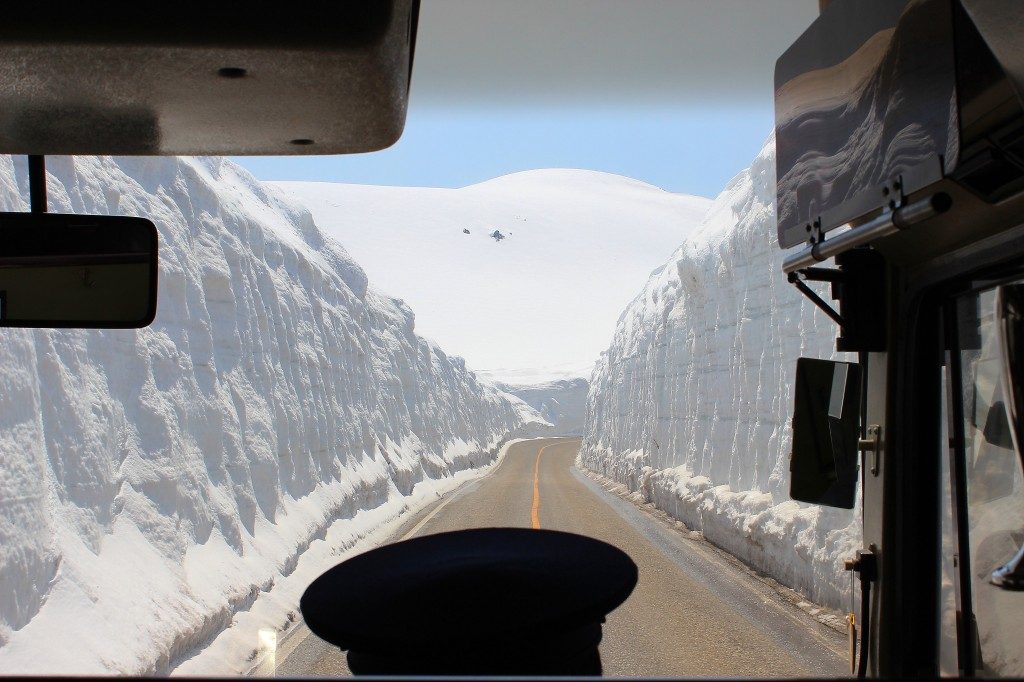
After just 15 minutes, the walls of snow had already gotten this massive.
It was incredibly bright with the sun and reflection off the snow. And then, we had arrived at Tateyama Murodo.
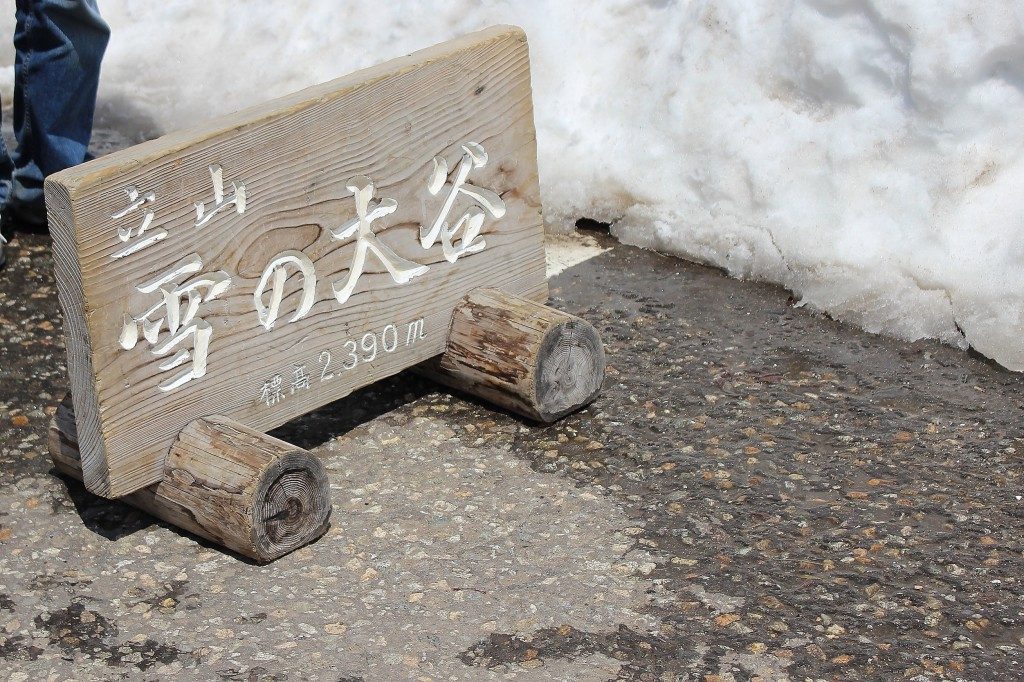
Once you get off at Tateyama Murodo, you have arrived at the Tateyama snow wall corridor.
Here, there is an elevation of 2390 meters and although there is so much snow, it was not that cold.
However, it was so bright that I could barely open my eyes. I will tell you again to make sure you bring sunglasses and sunscreen.
With my sunglasses, sunscreen, and parasol, I had completely turned into a Japanese auntie.
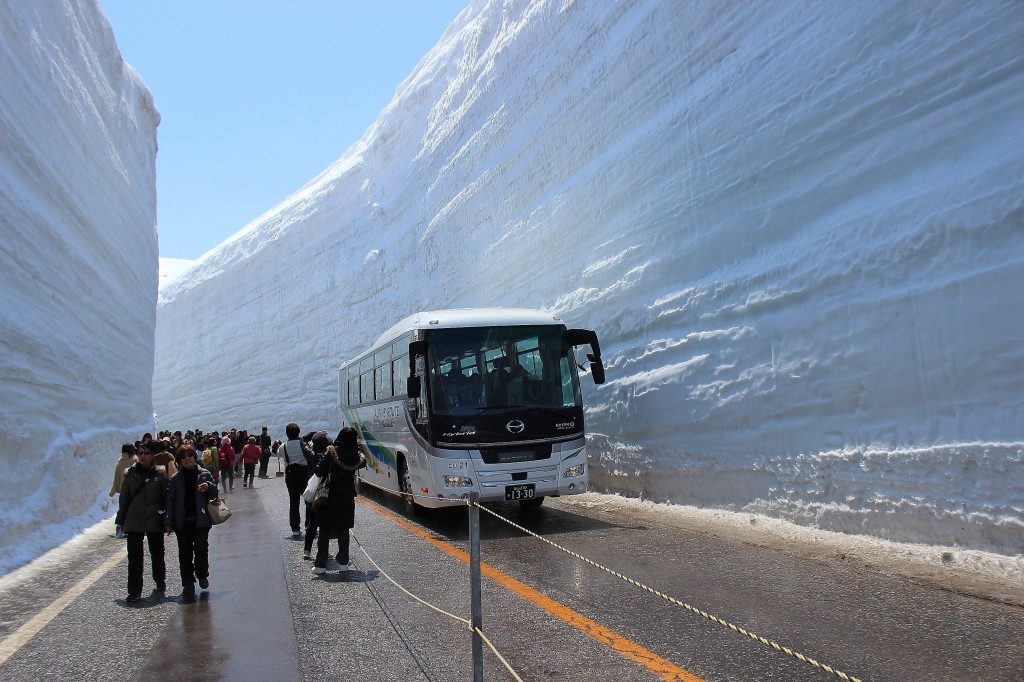
This here is the snow wall with a height of about 20 meters.
So this is the snow corridor which I have seen so often in magazines. If it were to start crumbling, that would be the end of me.
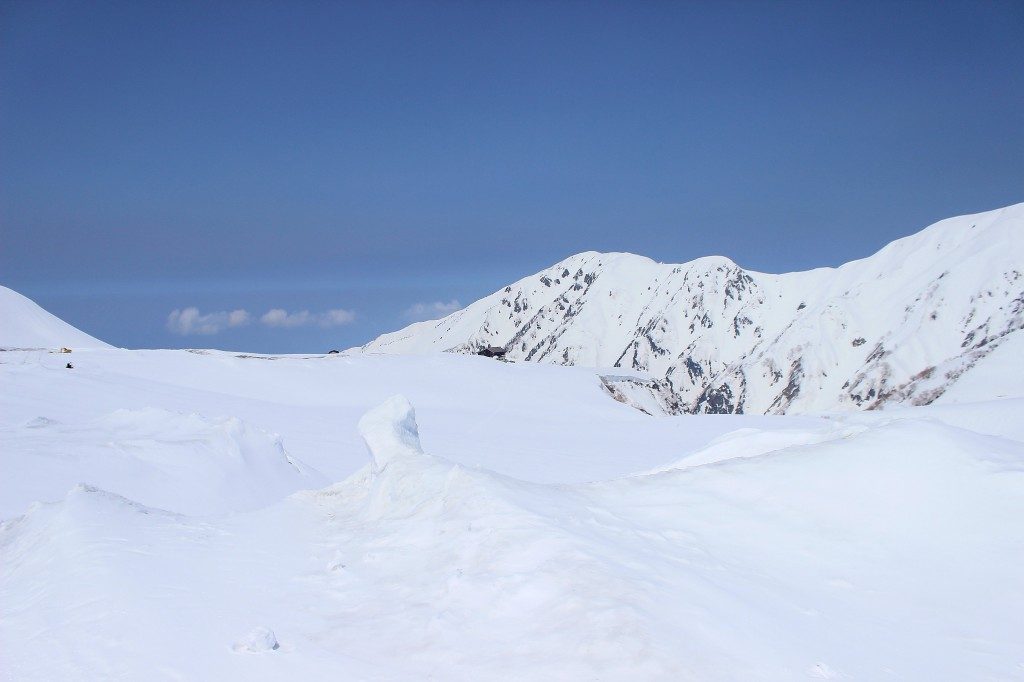
After this, I turned my gaze toward the spectacular natural view.
Amazing solid white!
Different from a ski slope, this snow had zero footprints and imperfections, making this a pure and beautiful snowy landscape.
However, if you turn your camera to the left…
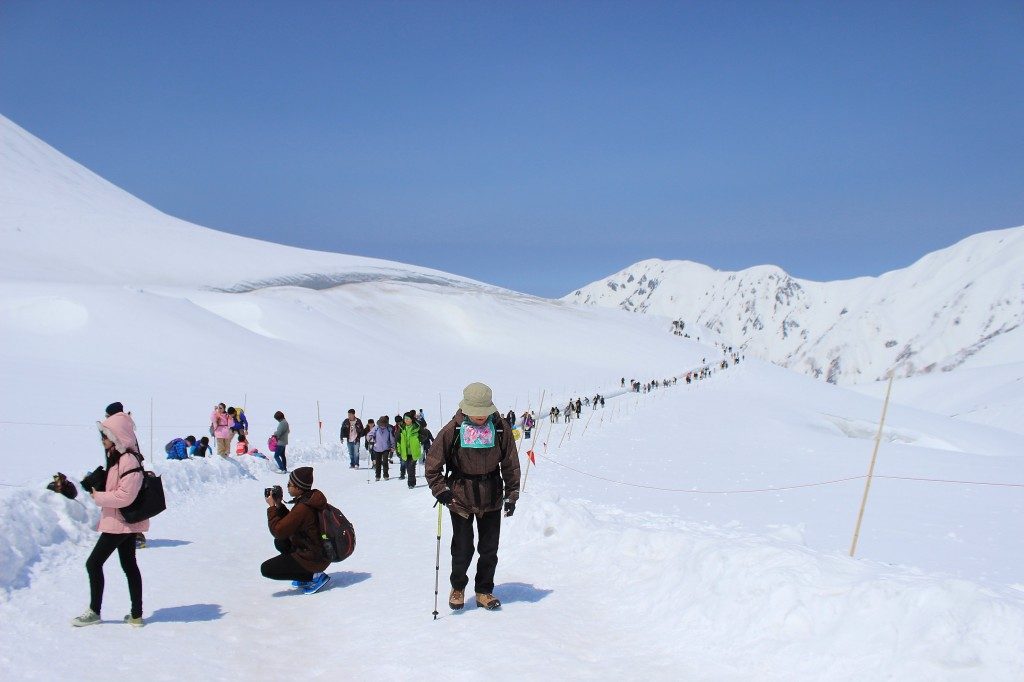
You will see a bunch of people.
As this is a very popular sightseeing location, there seemed to be quite a few elderly visitors.
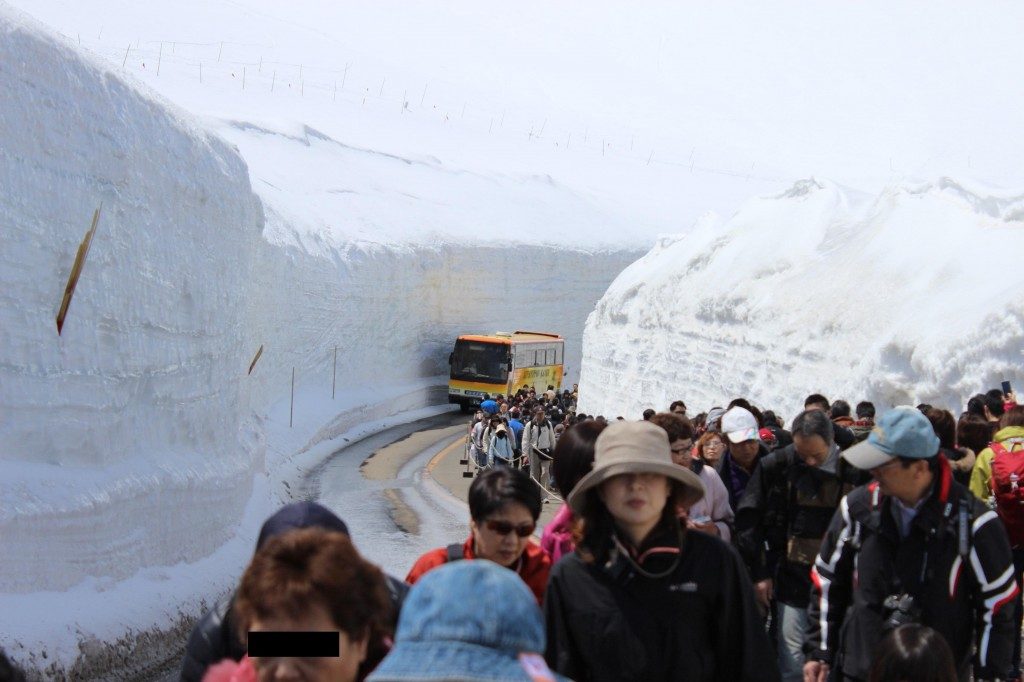
Of course, there was some congestion through the valley.
Everyone was wearing a hat and sunglasses so I couldn’t tell a grandma apart from a highschool student.
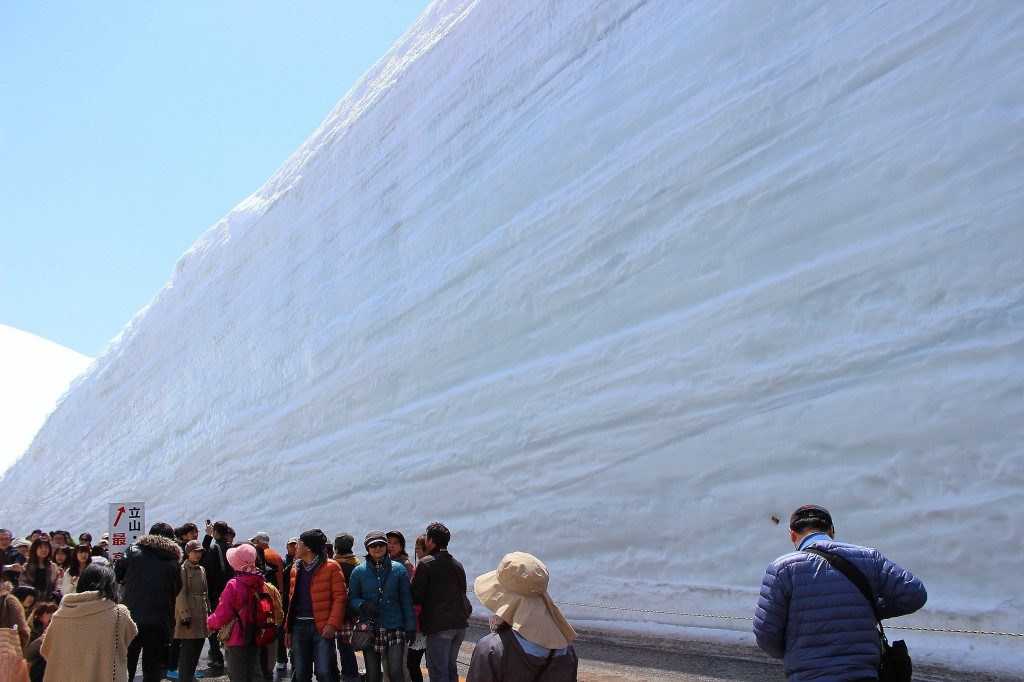
After I had thoroughly enjoyed the amazing snow walls, I moved on to go see the Kurobe Dam.
At Tateyama Murodo alone, there was a lot of activity.
Here, there is a wealth of restaurants and gift shops so it would be possible to eat lunch here, or later on at Kurobe Dam.
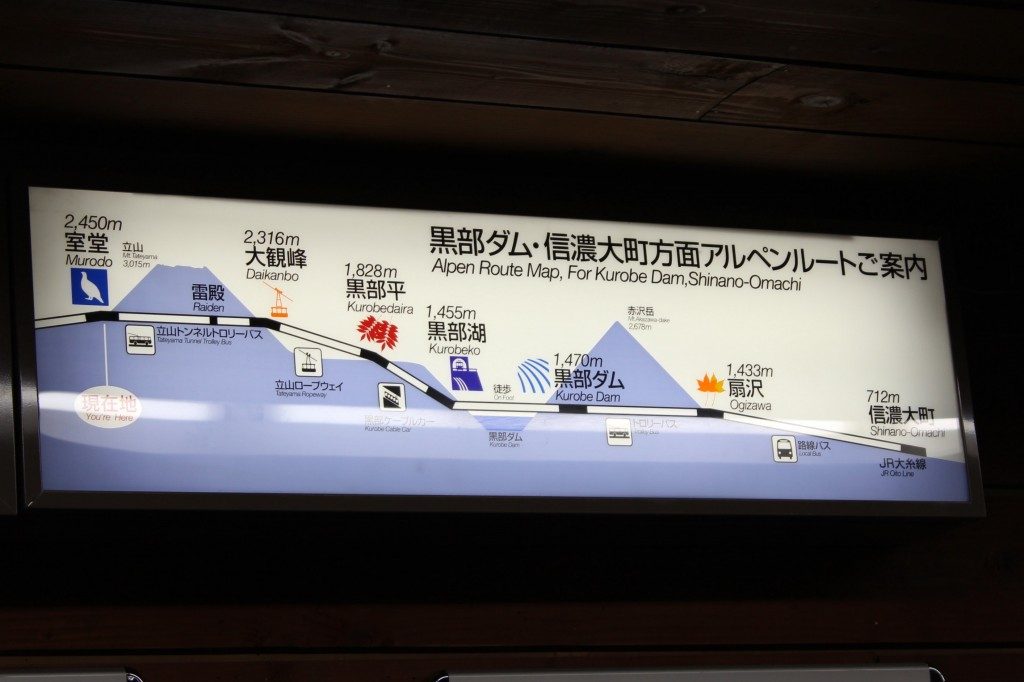
To go to Kurobe Dam from Tateyama Murodo, you first have to take the Trolley Bus to Daikanbo station.
Once again, it will be a lengthy ride.
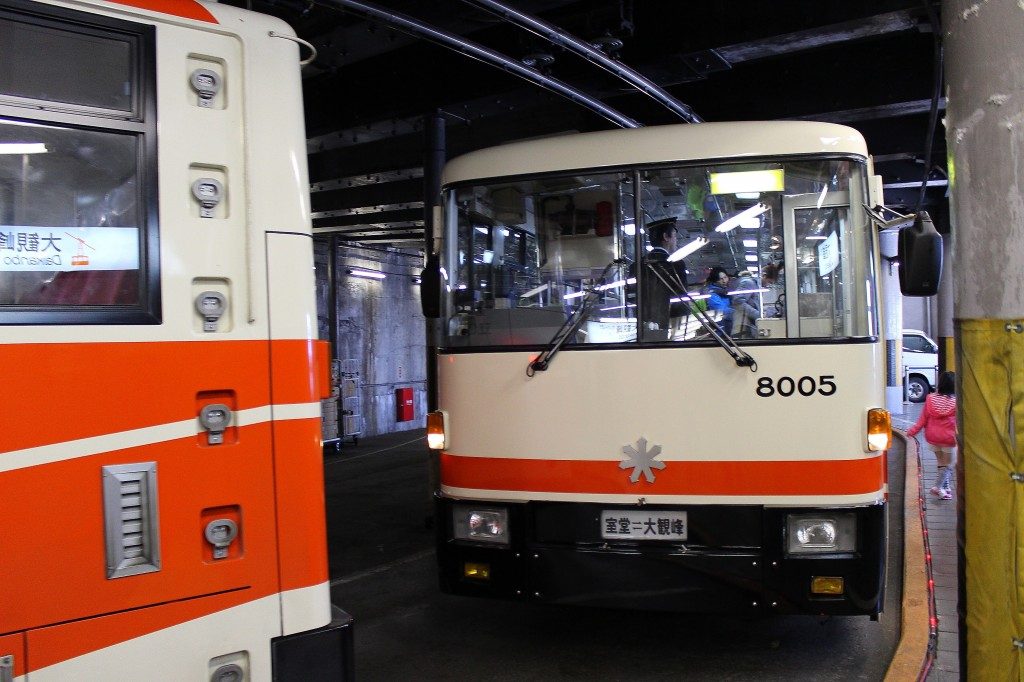
By the way, the Trolley Bus runs on electric power and it isn’t called Trolley because it is “toroi” (slow in Japanese).
Since it runs on electricity, there are no exhaust fumes, making the bus environmentally friendly.
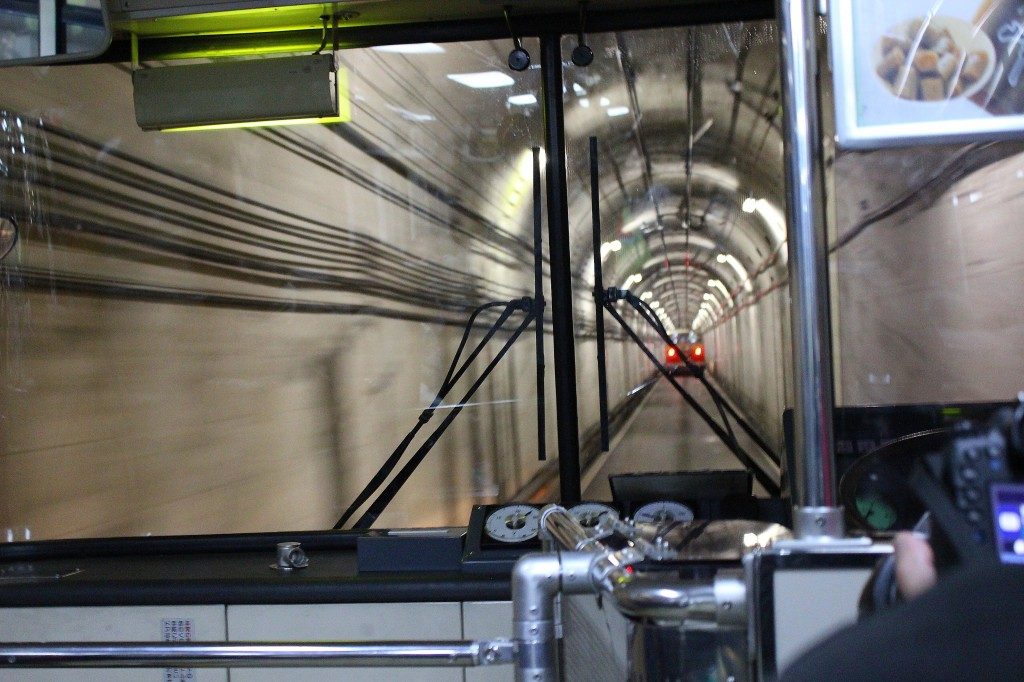
Because of the Trolley Bus being powered by electricity, I thought it would move very slowly, but surprisingly, it moved just as quickly as a gas car.
When passing through such narrow roads, I wonder how fast it was moving.
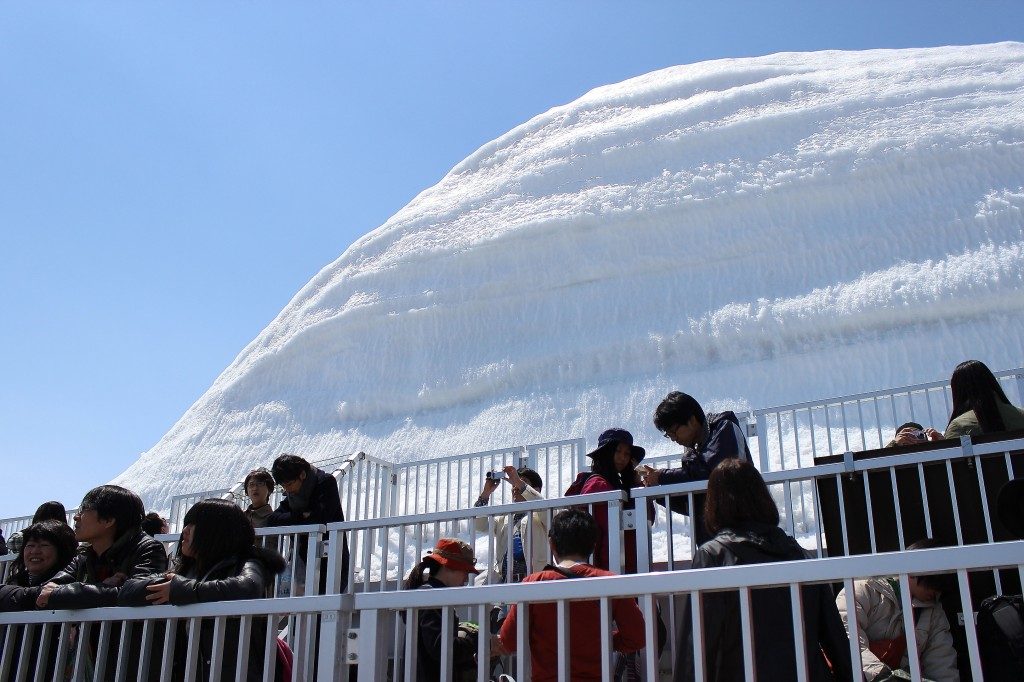
After being jostled by the Trolley Bus for several minutes, I arrived at Daikanbo Station.
The Daikanbo Station is built on a very steep cliff so you are able to go outside only on the roof.
Once on the rooftop observatory of the station, there is a sweeping view of Kurobe Lake and Tateyama. It is this magnificent panorama that makes it one of the most beautiful alpine routes.
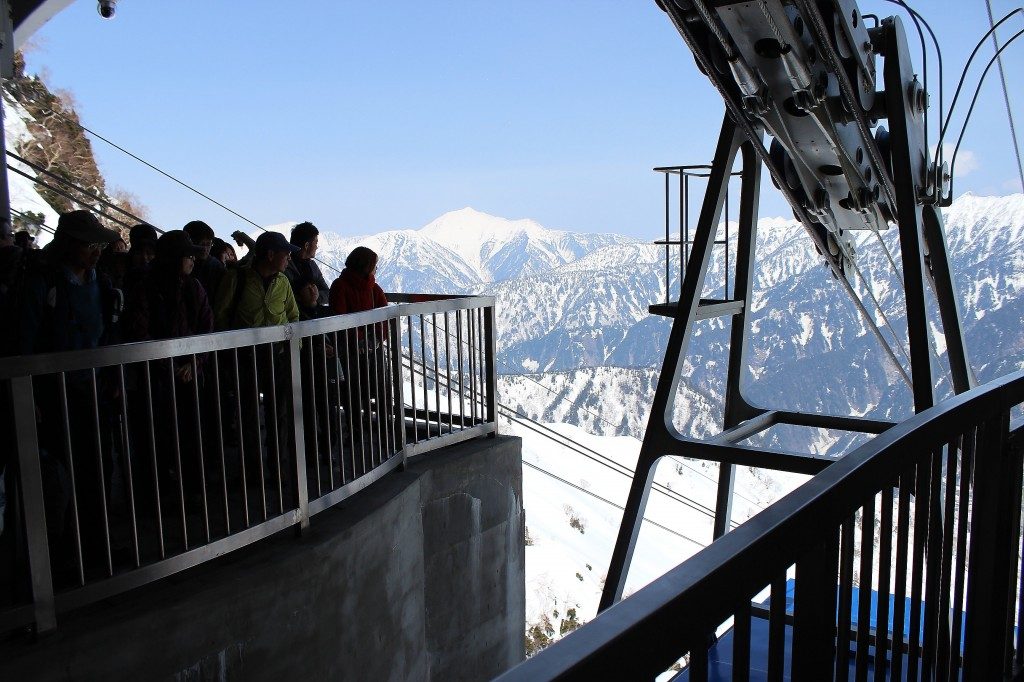
While there was about a 30 minute waiting period, there were souvenir shops and the observatory to easily kill time at.
Aboard the Tateyama Ropeway, you will head towards a white building on flat ground with an elevation of 1,828 meters called the Kurobedaira Station.
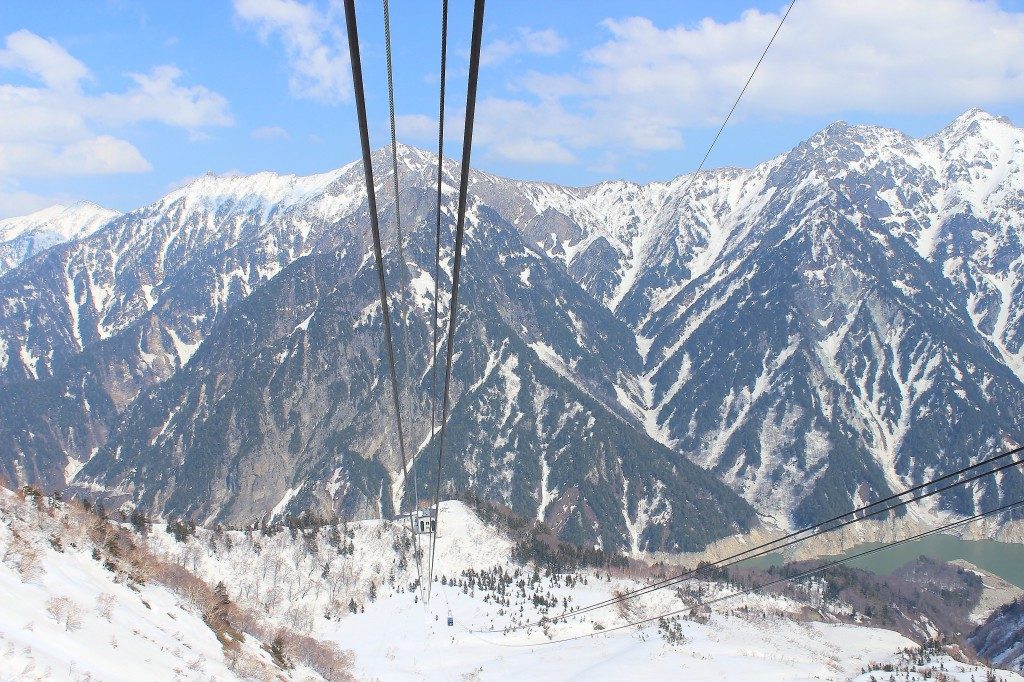
There was a breathtaking view from the ropeway, with Kurobe Lake on your right, Tateyama in front, and the small white building in the back which is Kurobedaira Station.
The ropeway was so fun!!!

After arriving at Kurobedaira Station, you are able to go onto an observatory above the station which offers a view of Daikanbo Station and the lines of the ropeway you just travelled across.
By the way, it is said that Daikanbo Station is built upon an area that has been observed for several decades and was the only place where no avalanches occurred.
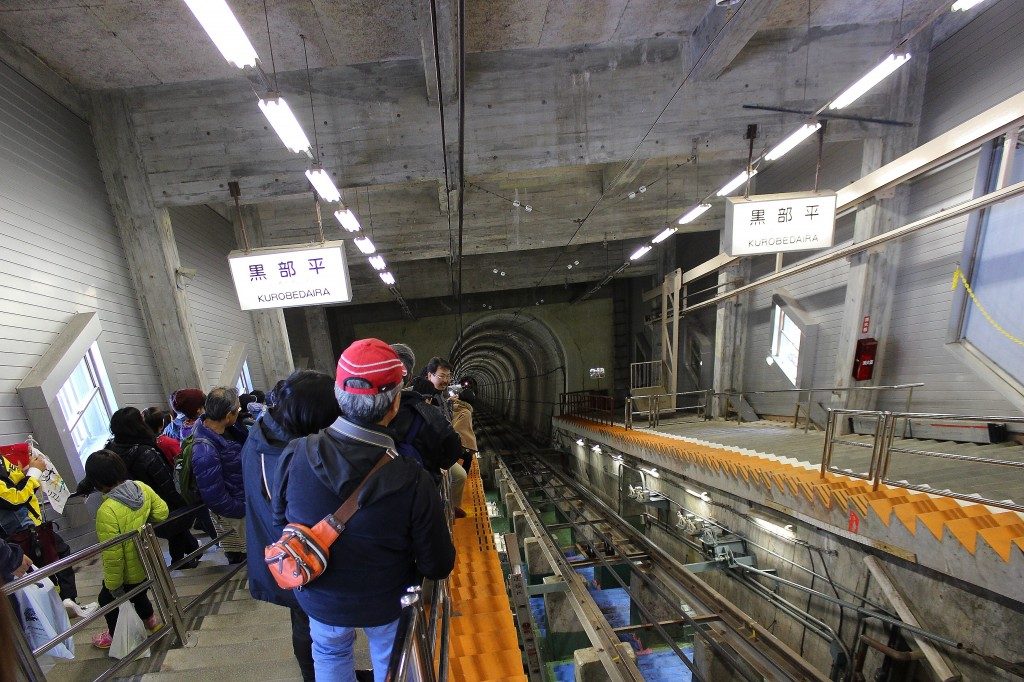
This was the last ride before arriving at Kurobe Dam.
Aboard the Kurobe Cable Car, we passed through an underground tunnel to get to the elusive dam.
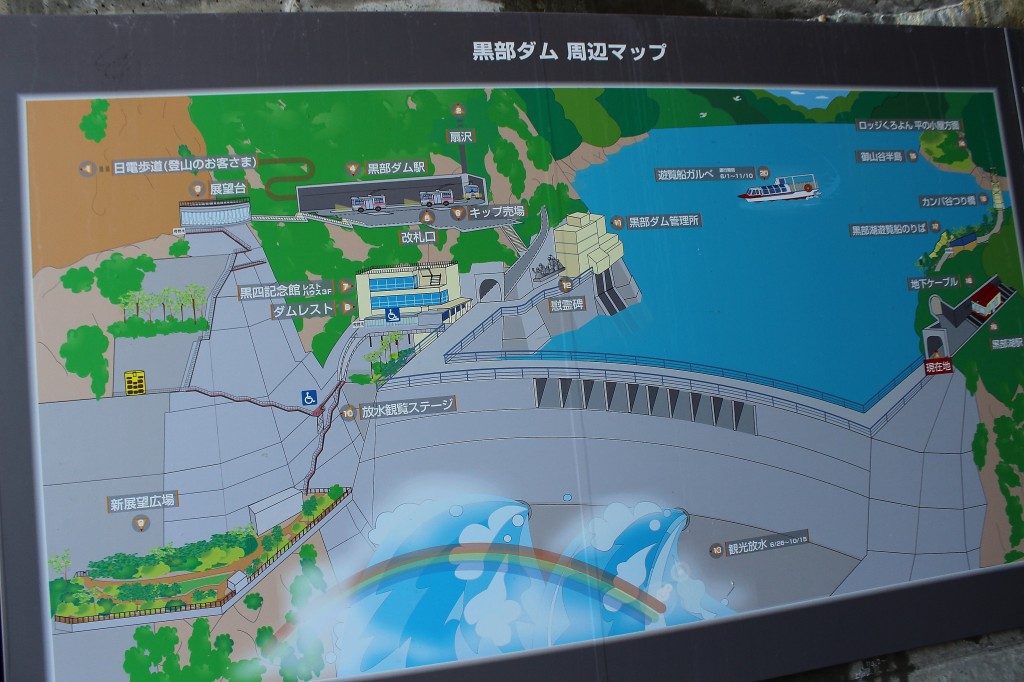
After a lengthy ride, I finally arrived at the vicinity of Kurobe Dam.
When looking at a map of the area, it appears to be very vast, but Kurobe Dam also looked like… a boob.
This was a great discovery. And also, a rainbow appeared.
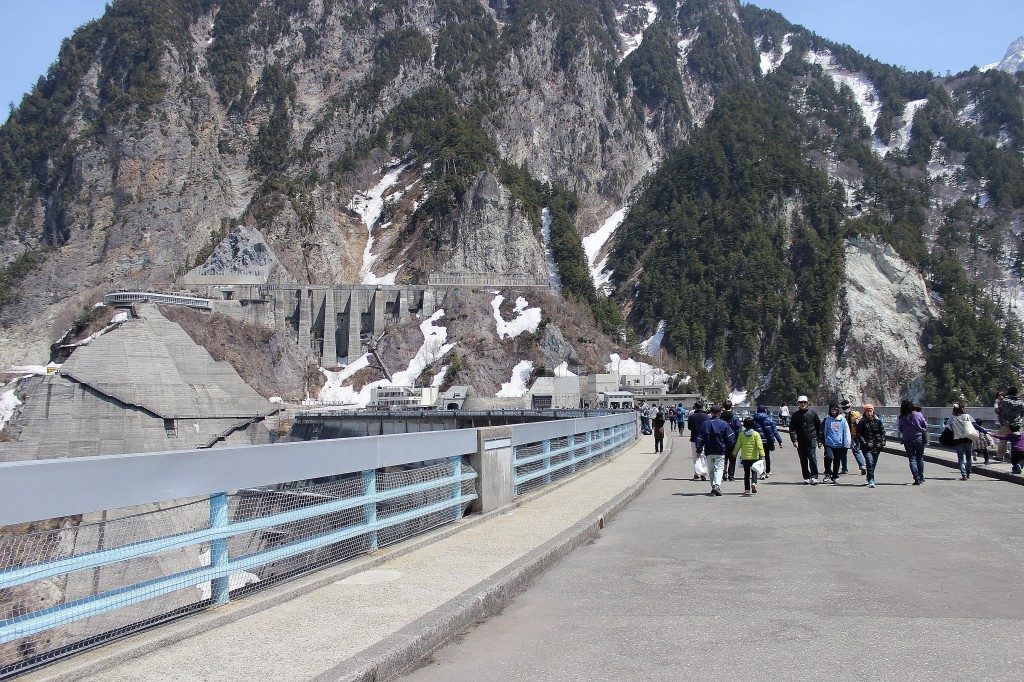
At last, this is「Kurobe Dam」.
As I was walking on top of it, all I could think about was how massive it was and wonder how in the world they were able to build something like this.
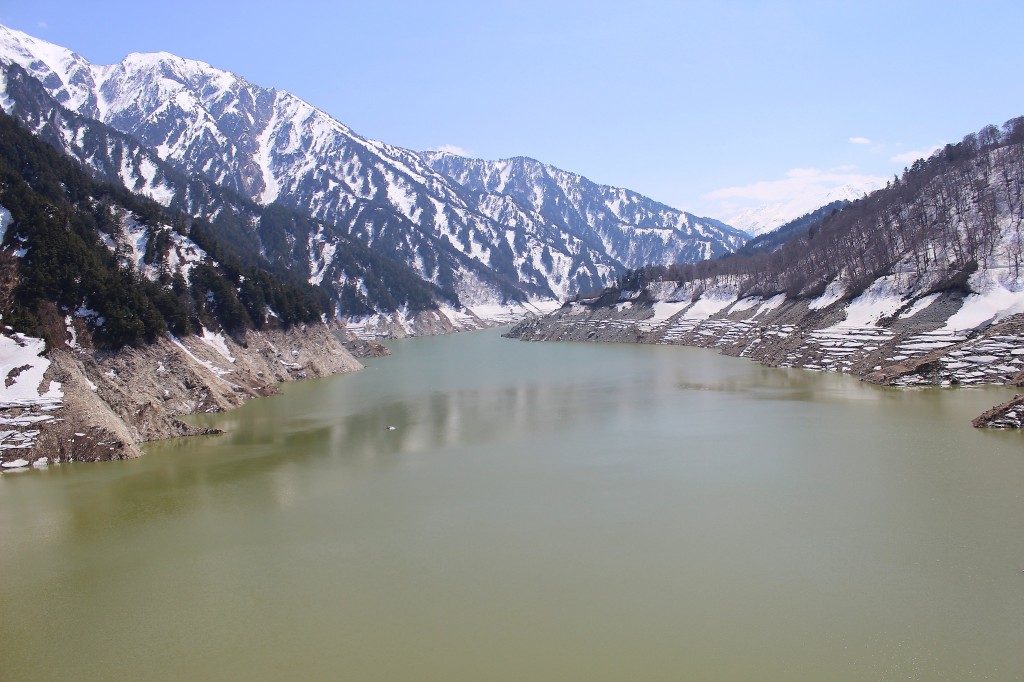
Behind it is Kurobe Lake that the dam is holding up.
Looks filthy.
It was a color dirtier than I expected since it was on such a magnificent mountain.
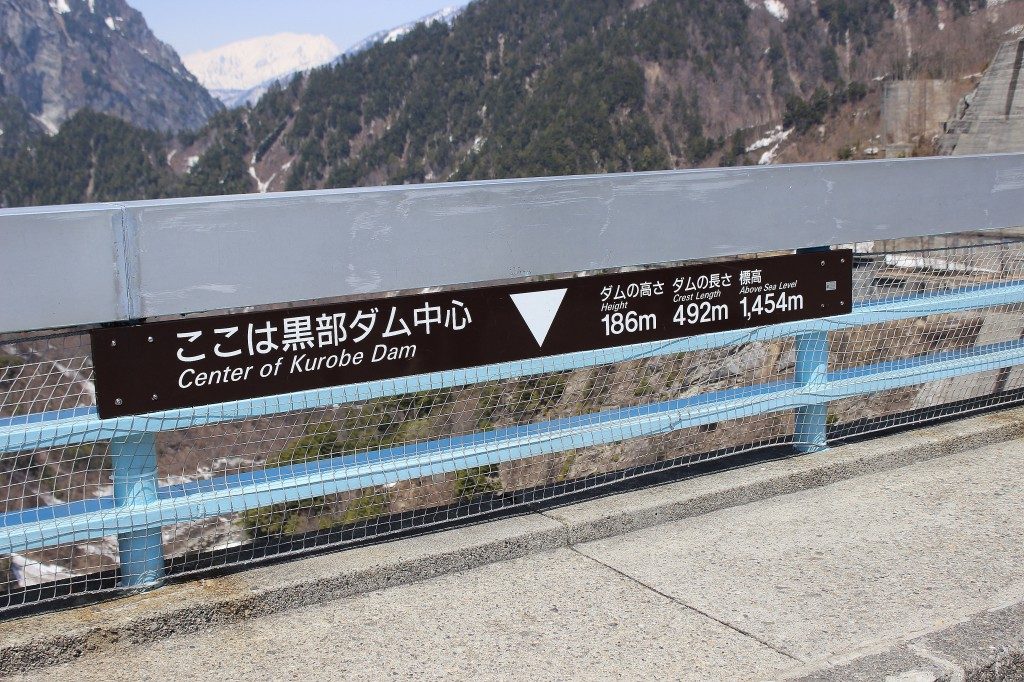
After walking along Kurobe Dam, I arrived at the central point of the dam.
Even with so many people around, no one was taking any pictures. Come on guys, take them!

Then, I proceeded to the observation deck to see the entire dam at once.
However, there is no elevator and only stairs to go up to the observation deck.
There was also a cheaply named character called DamDam-kun asking you to climb the 220 stairs with a smile.
That little rascal.
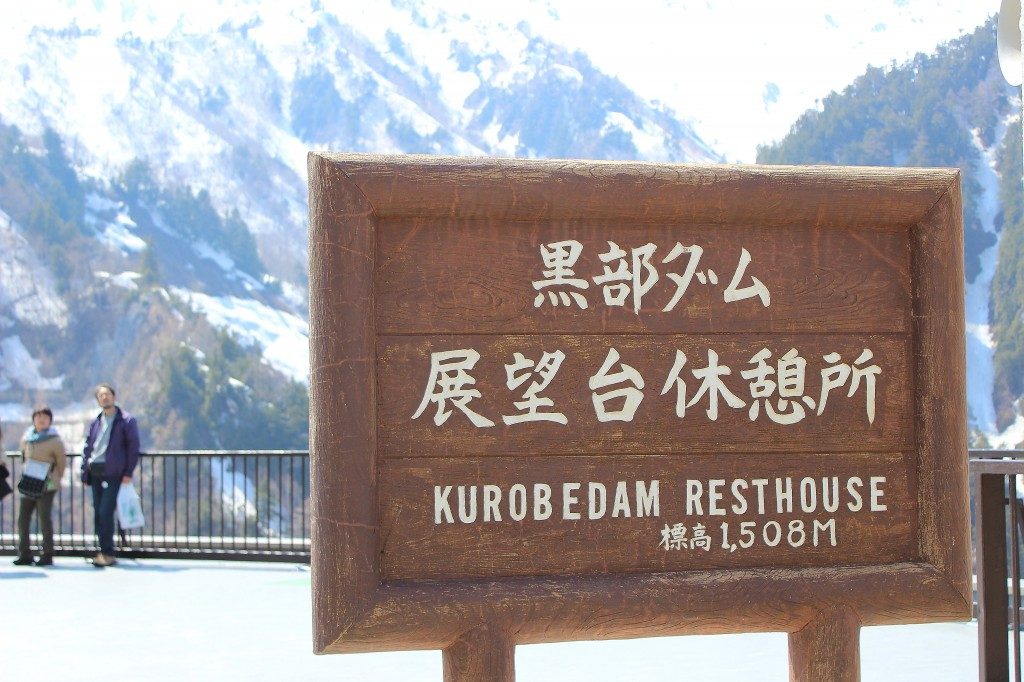
After climbing many steps, I had finally arrived at the Kurobe Dam viewing platform.
While eating a strawberry soft serve ice cream along the way, I was also eating up my time.
As a side note, while strawberry soft serve has no relation to the dam, there is something called dam curry offered here.
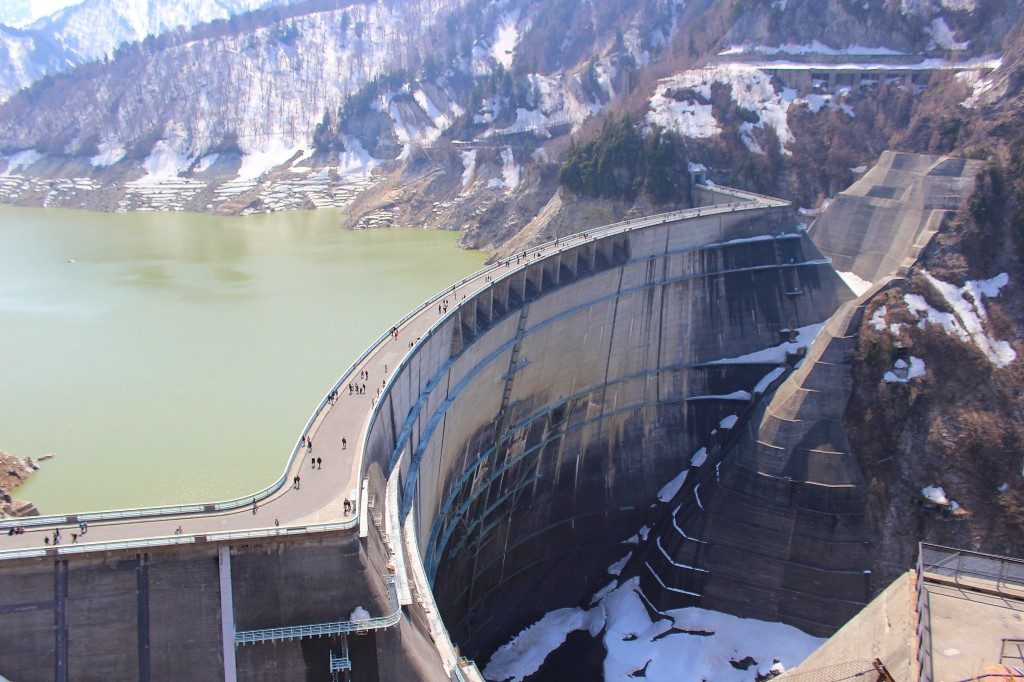
So, here is Kurobe Dam!
It has beautiful curves which are very impressive to have been built by people so long ago.
By the way, Kurobe Dam is an arched dome overflow dam built on the uppermost part of Kurobe River, and with a height of 186 meters, it is the tallest in Japan.
The construction work was called “the undertaking of the century” because of its scale and difficulty.
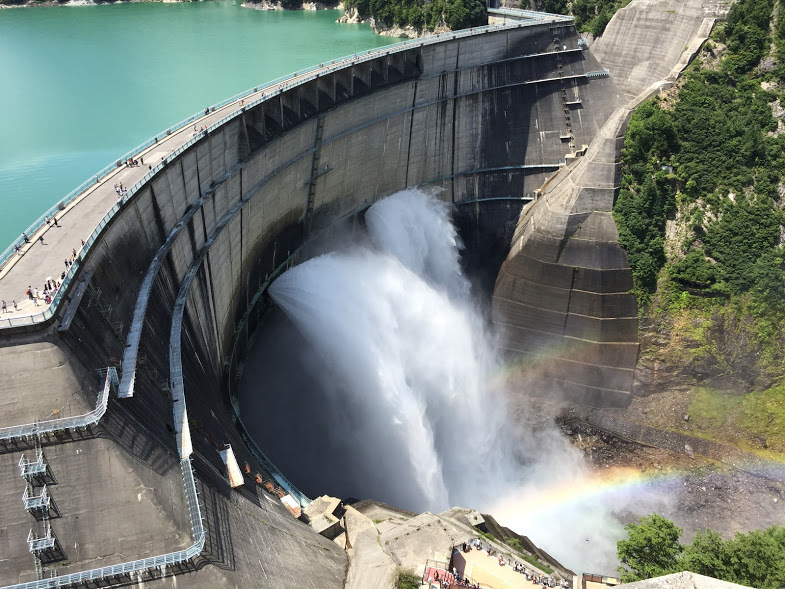
Periodically in the summer, the water is discharged and is also a sight to behold.
In reality, water discharging is not necessary, but is done so for the purpose of sightseeing.
The season for this is from late June to mid October and if you visit Kurobe Dam during that period, you will be able to see the spectacular display.
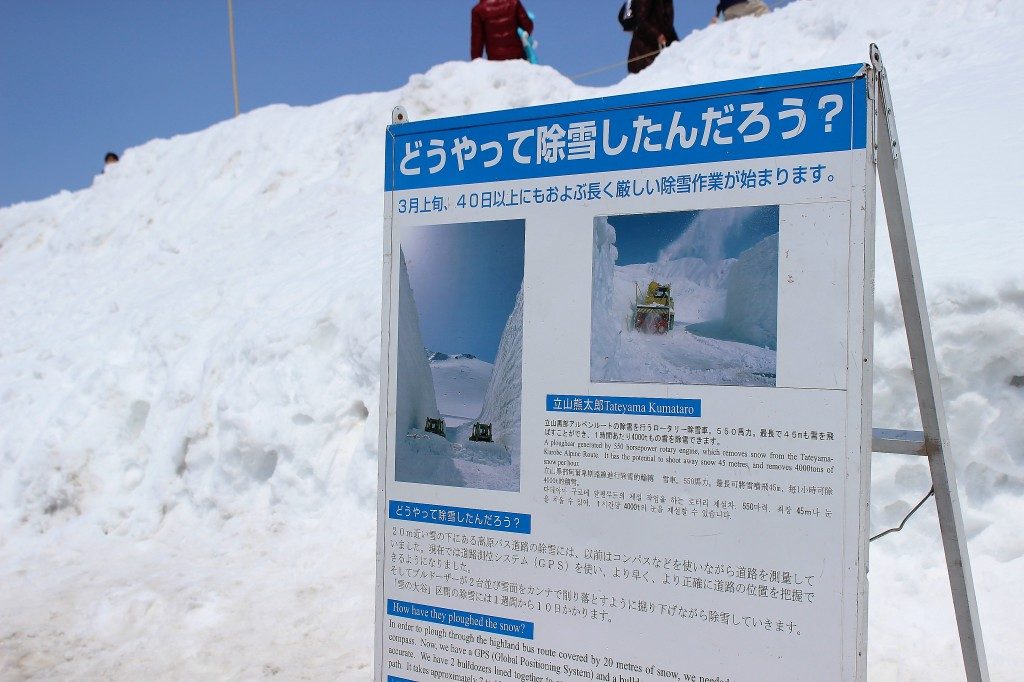
All in all, this was an incredible trip to take in the span of just one day with views that someone should definitely see once in their life.
As I had bought a round trip ticket, I returned on the same path back home.
I also noticed that on the way back there were fewer people so it was easier to take pictures.
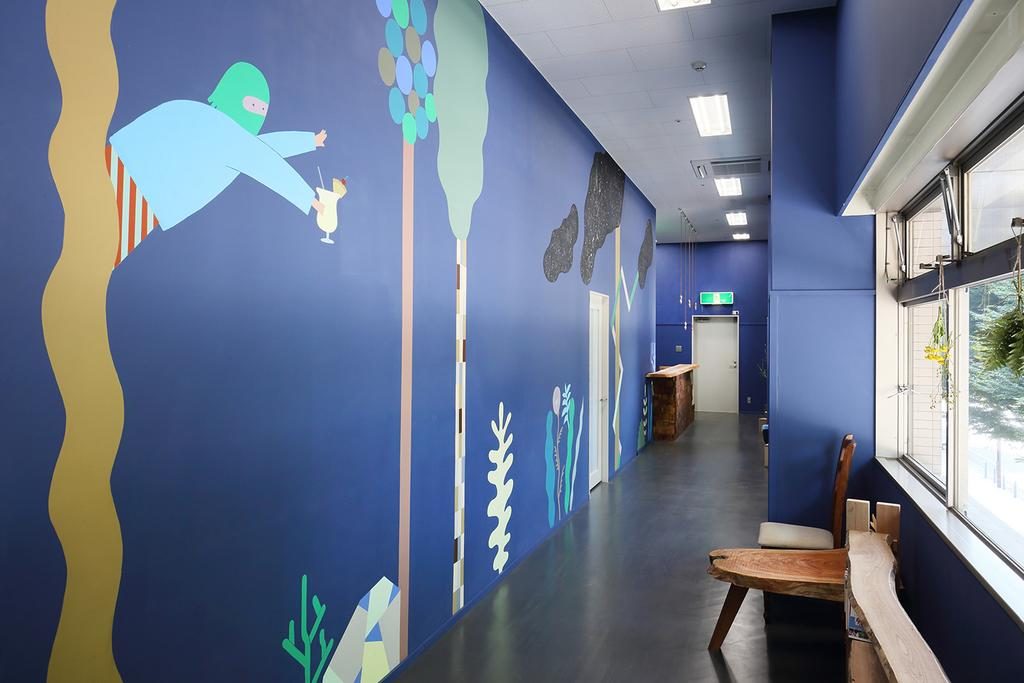
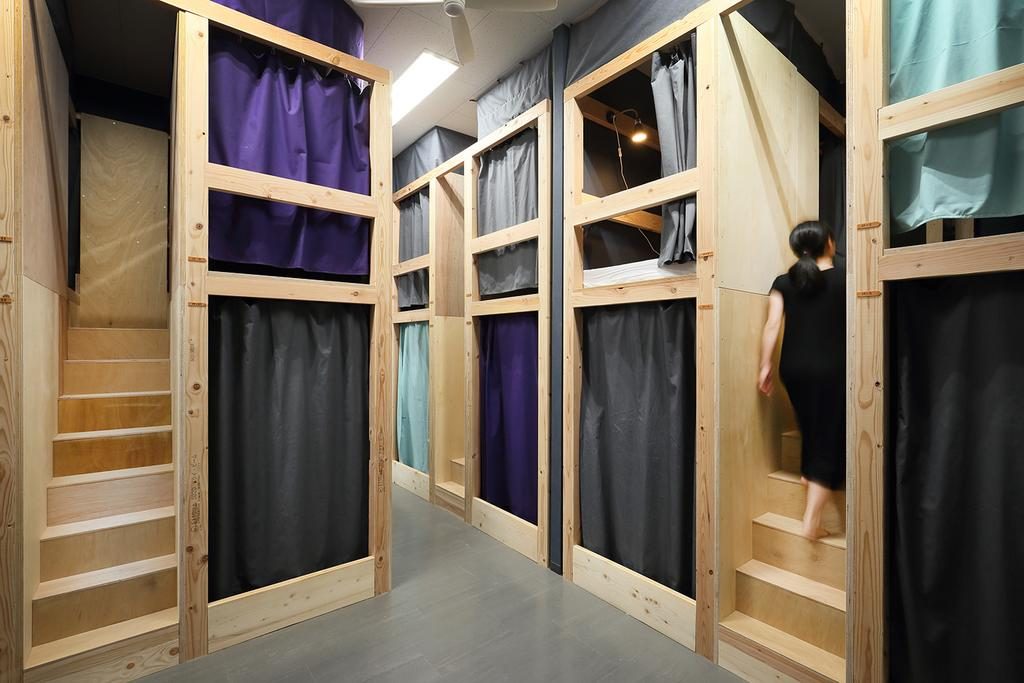
This is an event that brings in many visitors from around the globe and for those who are visiting from far away, Iruka Hostel offers convenient lodging just 5 minutes away from Toyama Station. A guest house with a convenient central location, Iruka Hostel offers accessibility to all of Toyama’s wide range of experiences and amazing sights. The lowest prices are available via direct reservation through the website.Iruka Hostel Booking Page!
